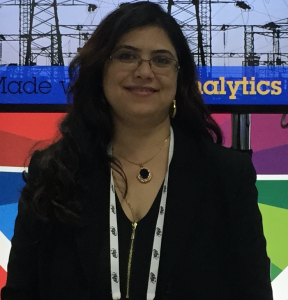Dr. Subarna Bhattacharyya, Co-founder and CEO of Climformatics

Subarna is the Co-founder and CEO of Climformatics, with a novel mission to predict climate towards an environmentally sustainable future. Her passion for climate science led her to research at Lawrence Livermore National Laboratory (LLNL), modeling abrupt climate change. With Master’s of Science degrees in physics and civil engineering and a doctorate in engineering mechanics, Subarna applies interdisciplinary analytical and data science tools to climate modeling and predictive analytics. She has been an invited speaker at CalTech, Columbia University, UC Davis, IBM, and the Climate Risk and Insurance summit, and has been published in leading academic journals. Subarna also worked as catastrophe risk modeler, computing expected losses and damages from hurricanes, tornadoes, and earthquakes.
What is the educational and career path that led to your current career?
I began my academic journey studying physics (BSc., MSc. Calcutta University) and civil engineering (MSc. Engg, Indian Institute of Science, Bangalore), then proceeding to climate data analytics. I did my PhD under the supervision of eminent fluid dynamicist Professor Roddam Narasimha at the Jawaharlal Nehru Centre for Advanced Scientific Research, analyzing Indian monsoon rainfall. That gave me my first insights into understanding global climate change. I worked in the insurance industry as a catastrophe risk modeler, after which I learned to model and simulate abrupt climate change at LLNL. Currently I focus on developing localized climate prediction technologies.
How did you become interested in environmental work?
From early childhood, I was interested in the newspaper weather report, because from it I could tell if I’d be able to play outside that afternoon. In my formative years, I often traveled with my father across India in his work as a civil engineer, particularly in the Himalayas and coastal areas. The stark differences in the landscapes, vegetation, and climate of these places fascinated me. Since then, I have seen how human activities like deforestation and fossil fuel emissions have transformed these serene landscapes to urban heat islands with scanty rainfall. These observations nurtured my interest in climate science, and inspired me to become a climate scientist.
What environmental issues are of most concern to you?
Our planet is warming up. Polar ice caps, including the Greenland ice sheet, are rapidly melting, and it is indeed terrifying. Warming ocean can emit methane from the clathrates, particularly from the shallow parts of the Arctic Ocean. This can cause runaway warming, accelerating our already-thawing planetary permafrost. That in turn might give access to new pathogen-borne diseases that may affect humans and all life on earth. We need to address these problems by curbing fossil fuel emissions, recycling more impactfully, and implementing carefully vetted climate restoration technologies.
What inspired you to start your business and how did you take the leap to start it?
With my interdisciplinary background I’m able to connect the dots across various technologies, such as catastrophe risk modeling and climate and weather modeling. This helped identify the missing pieces that my co-founder Dr. Detelina Ivanova and I could bring together, using data science tools to help solve the shortcomings of localized climate prediction. As the old saying goes, ‘Forewarned is forearmed.’ Having better predictive climate data would help farmers and businesses proactively make informed decisions, mitigating the risk of unforeseen losses. We took the leap in 2015, during the multi-year drought California was enduring, by seeking to answer the question of when the drought was likely to end.
What do you think are some challenges and opportunities facing women in the environmental movement today?
Women play a central role in most households, doing the cooking, cleaning, and other chores involving decisions around efficient water use, recycling, power use, composting, and so on. Making correct decisions on these actions in their everyday lives contributes toward a sustainable climate future. In some drought-stricken developing countries, school-age girls sometimes face a decision between attending school or walking miles to grab water for daily household needs. With more focus on STEM education, opportunities are opening up for women at all levels of education. This can result in more optimal use of Mother Nature’s resources, more focused on our need than our greed.
Want to connect with Subarna? You can connect with her personally on LinkedIn; also, check out her business Climformatics, winner of the CleanTech Open 2014 Western US Finalist Award.
